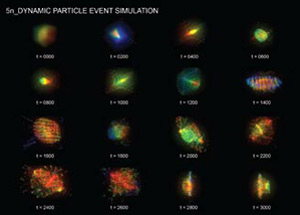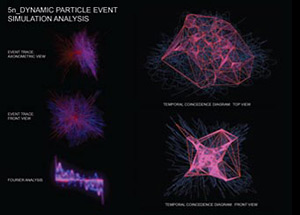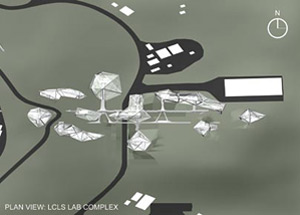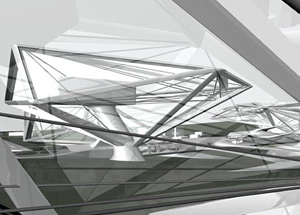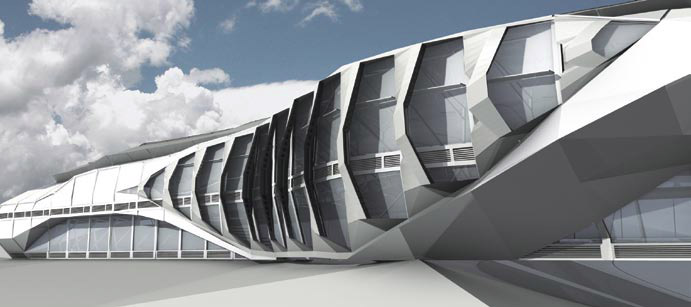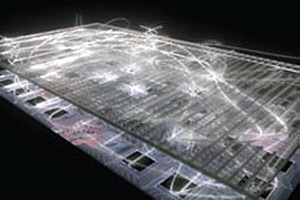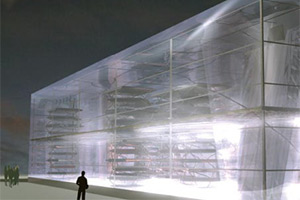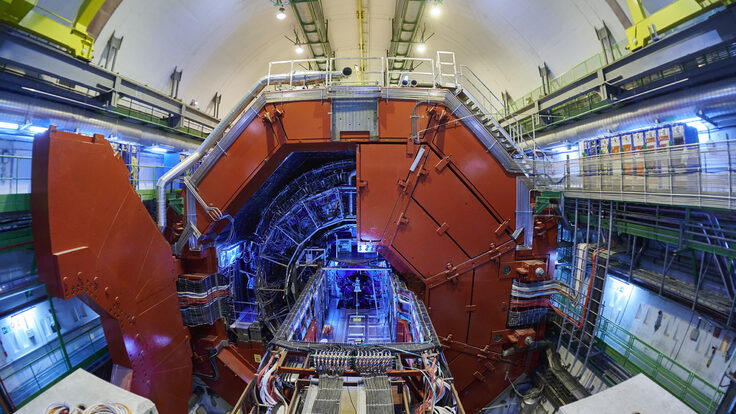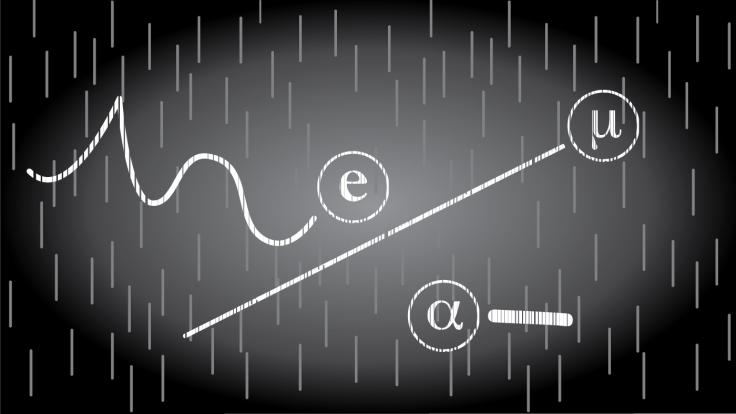Gallery: SCI-Arc
From physics to architecture
Asked to design a lab and office complex, students found inspiration in particle collisions, gushers of data, and the shifty habits of neutrinos.
Physics can be a source of inspiration for new architectural and spatial concepts, according to Jean Michel Crettaz, a professor at the Southern California Institute of Architecture, Los Angeles (SCI-Arc). Last fall, 15 of his students visited the Stanford Linear Accelerator Center to meet with researchers and gain a better understanding of phenomena such as supernovae, black holes, and neutrino oscillation. The students spent most of the semester translating their discoveries into hypothetical design concepts for buildings for the Linac Coherent Light Source (LCLS), the world's first hard-X-ray laser now under construction at SLAC.
|
|
||||
Crettaz says the idea was to engage with new concepts of space as a way of developing new concepts for architecture. When compared to other areas of industry, he says, "architecture is very slow at integrating new and available knowledge and technology. Architecture too often stays attached to outdated, antiquated and un-ecological concepts that are barely evolved from the Newtonian world," and "too often operates with spatial conceptions that can be understood as primitive and medieval."
|
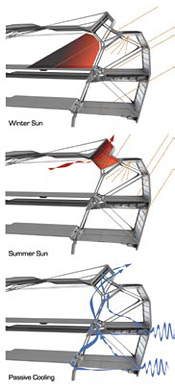 |
Crettaz has taken contemporary physics as a muse because he believes an array of new spatial ideas and conceptions can be found embedded in the principles of the field. He assigned his students physics research before visiting SLAC, as well as suggested readings and viewings that ranged from Stephen Hawkings' A Brief History of Time to Blade Runner, Star Wars, and Metropolis. The students toured SLAC and met privately with physicists. They were asked to design a complex for the new light source that would include such things as a visitor center, meeting rooms, and office space. The finished projects, in the form of animations and film, were presented at SCI-Arc at the end of the semester; there are also plans to exhibit the work at SLAC.
Kristopher Conner, who is working on his masters thesis, says he was interested in the role that wave functions, and especially interference patterns, play in contemporary physics. Conner discussed this topic with physicist Lance Dixon, who recommended that he read up on quasicrystals.
Conner used animation software, MAYA, to simulate particle events. He then analyzed the simulation by applying Fourier analysis, a method of breaking down complex information into simple wave forms. Tracing the paths of the particles, he created a series of nodes at the places where their paths crossed, and then generated polygonal surfaces from those nodes that allowed him to better visualize their spatial relationship.
From this experiment, Conner singled out the idea of fluctuations of forces and forms over varying time frames and applied it to the design of a building for the LCLS. He analyzed the interactions between many factors, such as the ebb and flow of people using the facility, the angles at which sunlight would hit it, the amount of rainfall, and the effect of gravity on the construction, among others. He studied the relationships between these parameters over days, years, and decades.
"The relationship of these forces over a day seems chaotic," he says, "but as you start to look at it over a longer timescale, you recognize a pattern."
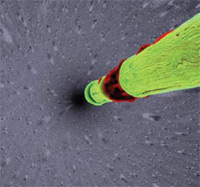 |
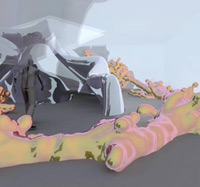 |
| Scott Abukoff’s design is inspired by the ability of neutrinos to change from one form to another as they fly through space. His animation depicts neutrinos as brightly colored, wormlike objects (upper-left image). Viewers fly into the “interior” of a neutrino and find themselves inside a building (upper-right image) whose floors intertwine with a wormlike system that carries heating and air conditioning. Translating the dynamic nature of the neutrinos into a static building design was a challenge, Abukoff says; he generated these forms with a dynamic fluid simulation program. “It is an abstract kind of architecture," he says. “It’s not sectioned off. I don’t know where the restrooms are, or anything like that. But I just wanted to create an architectural space, not really figure out the details of how people work." | |
With that information, Conner designed a structure that would grow along the axis of the LCLS in response to the pattern of building use and the continually varying needs of both the institution and individual labs.
Another student, Scott Abukoff, worked with physicist Allen Odian to learn more about neutrinos and their behaviors while changing states.
"My objective was to capture the changing states of particle physics and interpret them in an architectural program," Abukoff says; the result was a 3D animation in which various aspects of a structure "were changing instantly, like neutrinos."
Abukoff says he found the experience at SLAC fascinating. "I've always liked physics; it was my favorite subject in high school," he says. "But then I went to architecture school and I thought I'd never have a chance to return to it." He was so drawn into his research subject that he couldn't stop reading about it, he says: "But in the end, it all had to come back to architecture."
|
||||
Text by María José Viñas
Images courtesy of Scott Abukoff, Kristopher Conner, Matthew Majack, and Gilad Reichenberg
Click here to download the pdf version of this article.



